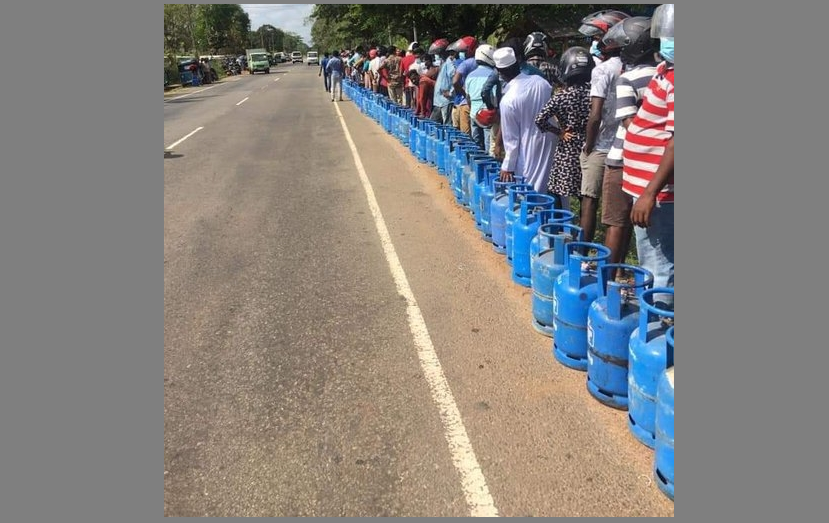Sri Lanka’s current problem is it does not have enough money to buy what it needs from the outside world. Here’s what has happened.
A couple of millennia ago, most villages were economically self-sufficient. They produced everything that the residents needed. But modern nation-states are seldom self-sufficient though the globe itself is now a village. They export their surplus. They earn and save foreign reserves. And, they import to cover their deficiencies. Sri Lanka’s current problem is it does not have enough money to buy what it needs from outside world.
RIGHT NOW
Sri Lanka has sought a $1 billion credit line from India to cover the import of essentials, news agency Reuters has reported as the island nation battles through its worst economic crisis in decades.
This is in addition to $1 billion India has already pledged to bail out Sri Lanka, which is struggling to pay for the essential imports including food and fuel.
HOW BAD IS IT?
Its foreign exchange reserve has dipped 70 per cent since January 2020. Sri Lanka’s foreign currency reserves fell to $2.31 billion in February a fall by $779 million from December 2021 through January 2022.
This stalled its imports leading to acute shortage of several essential items. Its currency has undergone substantial devaluation. Its efforts to find generous global lenders have not been very successful.
LANKAN DEBT
Sri Lanka’s debt burden has become unmanageable for the country if a proper bailout package is not given to the country from an international financial agency or group.
International ratings agencies have downgraded Sri Lanka’s credit ratings. Market observers fear that Sri Lanka may not be able to service its $51 billion sovereign debt this year.
INDIAN AID
India has reportedly assured Sri Lanka that it would extend the credit line to meet the imports of essential items such as rice, wheat, wheat flour, pulses, sugar and medicines.
Besides the two $1 billion credit lines, India earlier this year extended a $400 million currency swap, and another $500 million credit line for buying fuels.
This is in addition to the Chinese currency swap facility amounting to $1.5 billion in 2021.
LIFE IN LANKA
Lankans are having real tough time. Its banks are unable to secure dollars to finance imports of any kind including food, fuel and medicines. The Covid-19 pandemic only aggravated its economic woes since January 2020, after which the spread of coronavirus shell-shocked the world into separate cocoons.
Prices have sky-rocketed. Each of the past five months has recorded a new high of inflation rate. In February, inflation rate was pegged at 17.5 per cent. Food prices rose by 25 per cent. This increase in prices happened on January’s inflation rate of over 14 per cent.
Stalled imports of the essentials forced the government to resort to stricter rationing. For example, against one kg of milk a day, a Sri Lankan can now buy only 400 grams of milk a day.
Sri Lankan cities are facing daily power cuts of over five hours. Reports say people are forced to stand in kilometer-long queues to get cooking gas cylinders and petrol-diesel.
NOT TODAY’S PROBLEM
If Rome was not built in a day, a crisis does not arrive in a blink. Sri Lanka’s economy has had structural problems for several years. The successive government took short-cuts to address the issues.
For example, every government in the past 15 years issued sovereign bonds without provisioning for repayment. Its foreign exchange reserve increased but not through export of goods and services but from borrowing foreign currencies. This left its forex reserve vulnerable to market shocks.
During the Covid-19 pandemic, its foreign remittances nosedived, and foreign exchange booster tourism sector practically crumbled. Tourism sector is among the top earners for Sri Lanka. But the sector took a hit after Easter bombing in 2017. Before it could recover, the Covid-19 pandemic hit the world hard.
When Covid-related curbs started lifting, tourist inflow was heavy from Russia and Ukraine, amounting to about 25 per cent up to mid-February. The Russia-Ukraine war and consequent sanctions on banking in Russia had a ripple effect on Sri Lanka. Its traditional tourist sources India, China, the UK and Germany have not recovered to pre-Covid levels.
The Covid-19 pandemic exposed the vulnerabilities and put Sri Lanka in a situation where it appears clueless about how to exit from this financial mess.
